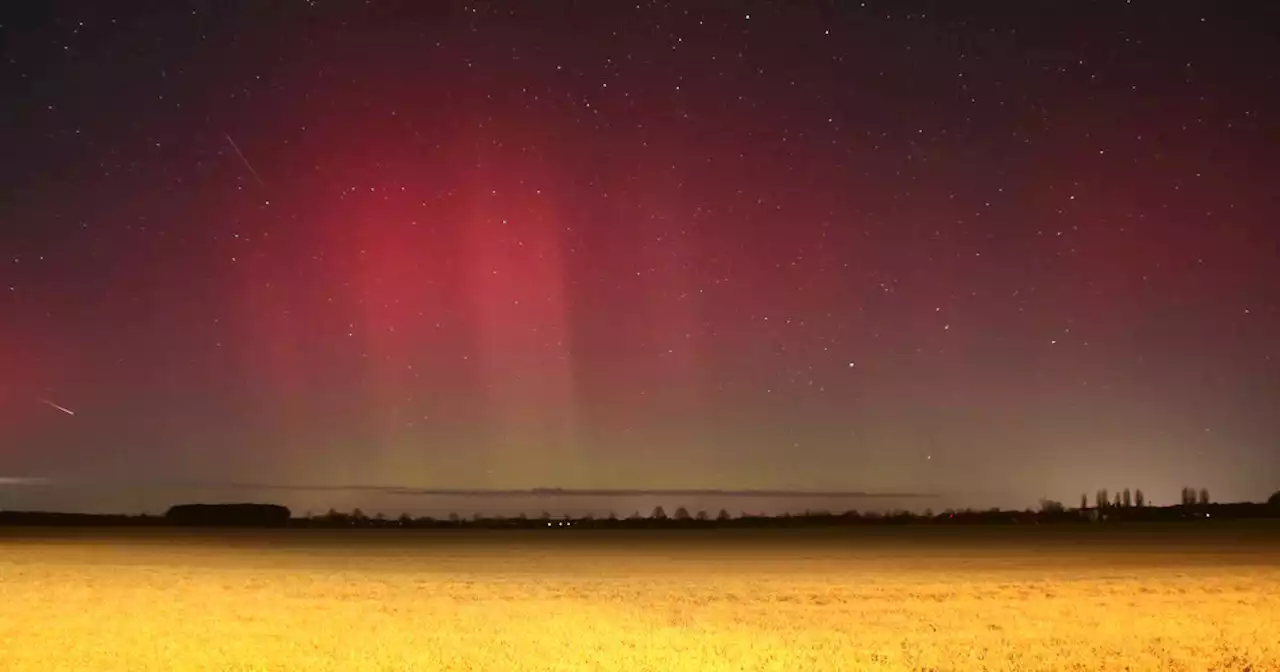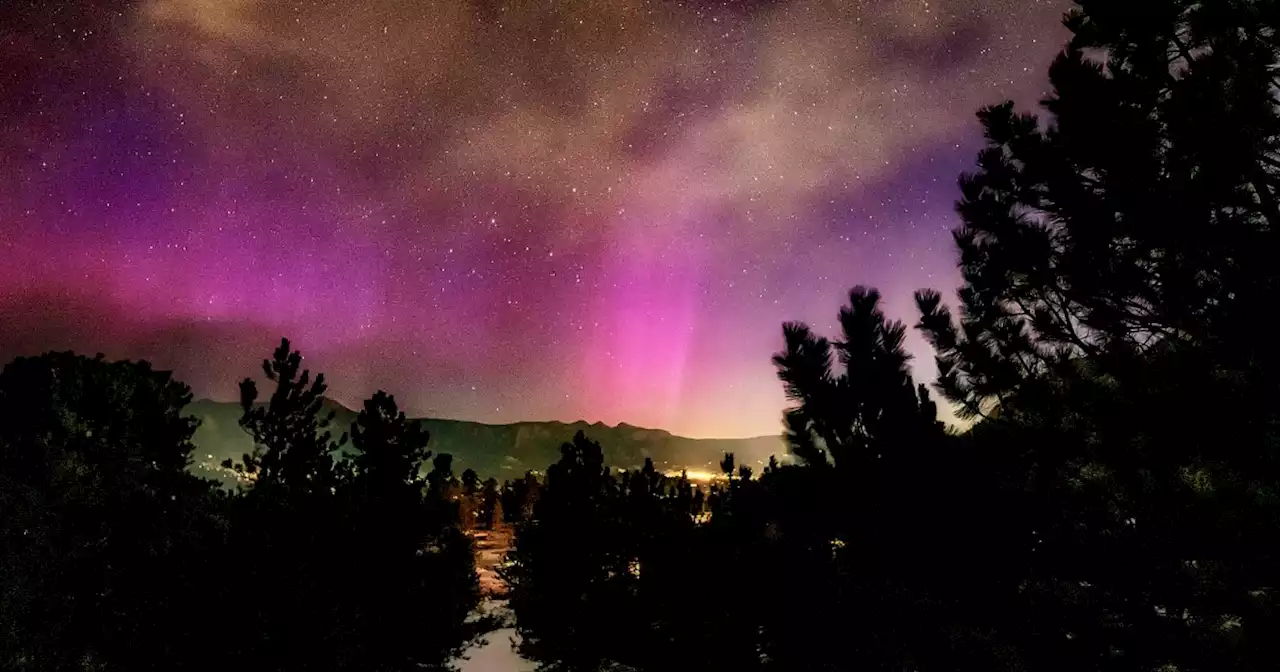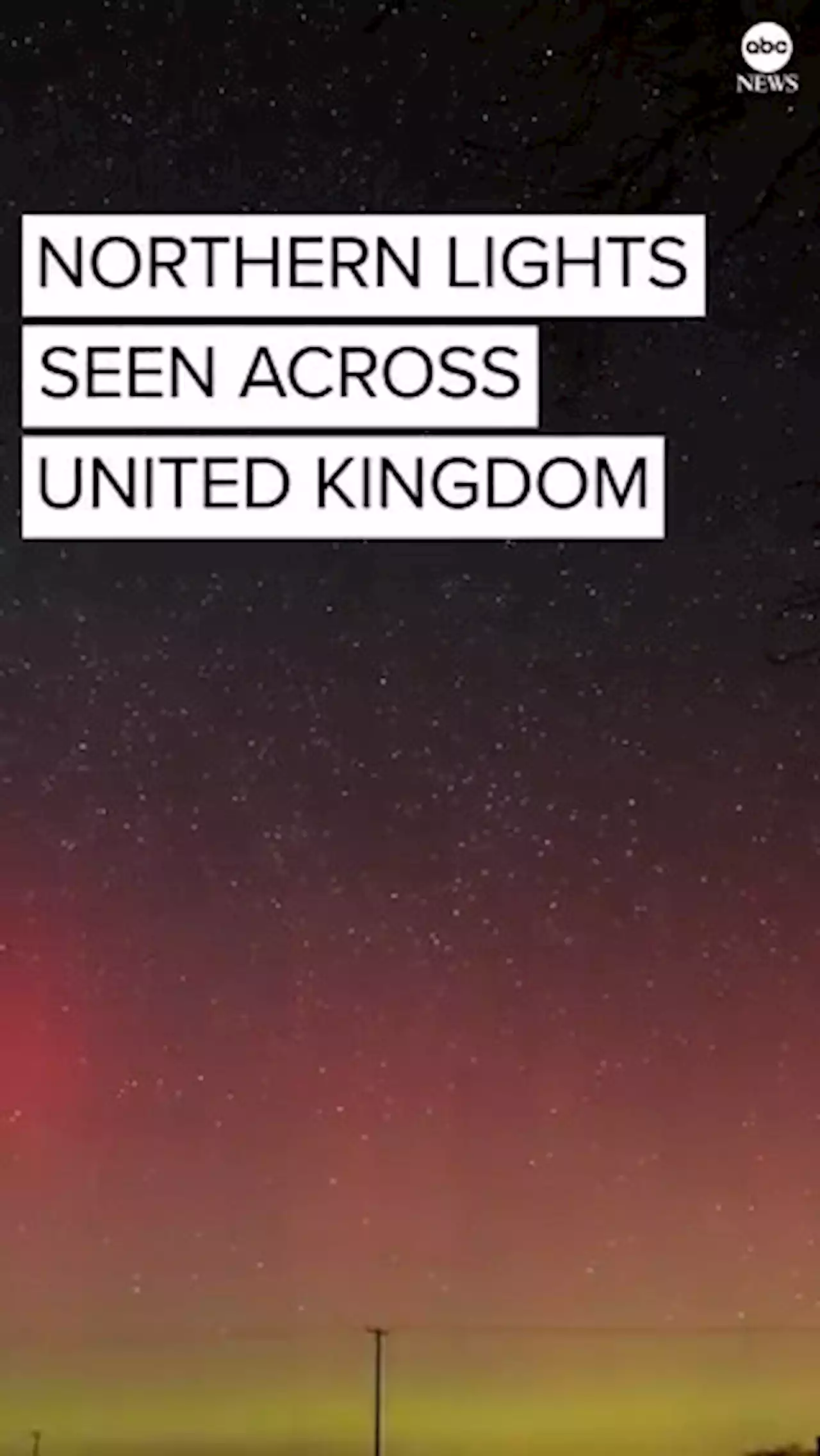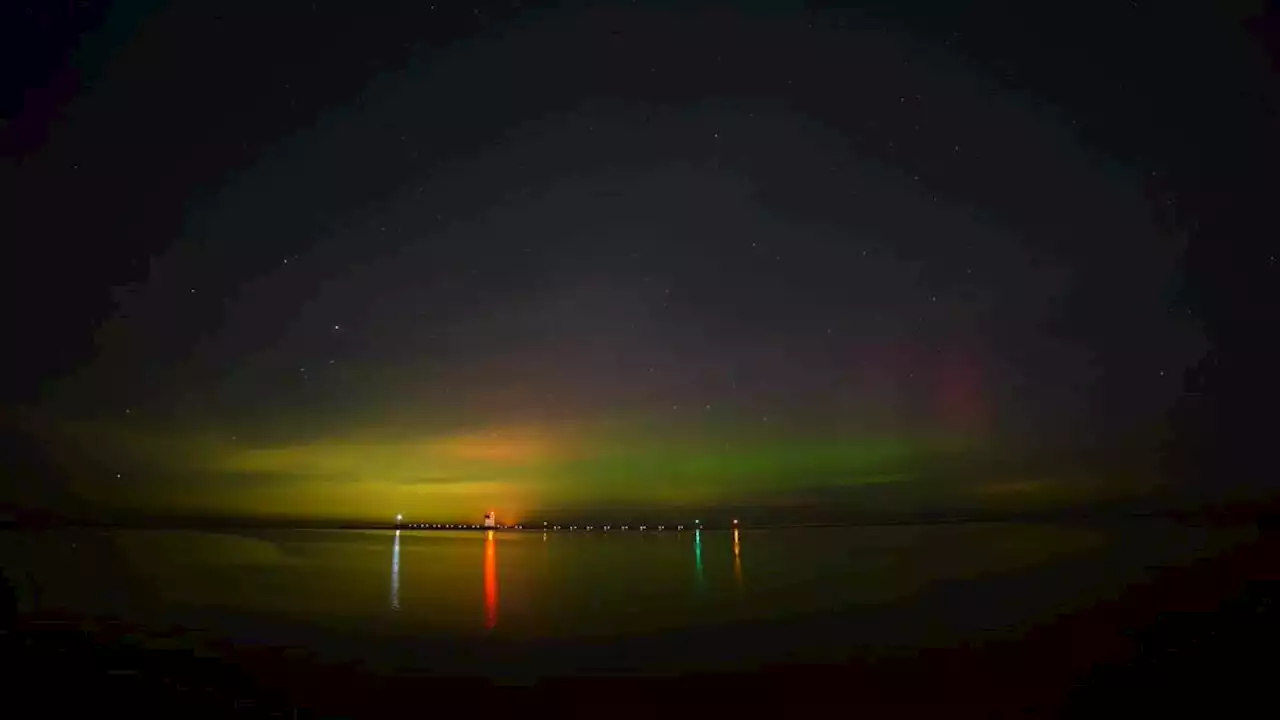The phenomenon is often accompanied by high winds, hail and lightning.
A"waterspout," or"water tornado," emerged over the rocks in Shelter Cove on the Lost Coast Monday afternoon. The unusual sight was seen and photographed by resident Micah Crumbaugh while he was on a walk.
"It was really cool watching it make its way down to the water and seeing the water rise up to meet it," Crumbaugh told SFGATE."Where I was standing it was sunny and warm. It was a really cool sight to see, especially right after snow down here in Shelter Cove."
United States Latest News, United States Headlines
Similar News:You can also read news stories similar to this one that we have collected from other news sources.
 Northern lights put on 'spectacular' show in rare display over the U.K.The northern lights have made an unusual appearance in the U.K.'s south, a rare occurrence for the phenomenon that is typically seen in Iceland and Scandinavia. And the show isn't over yet.
Northern lights put on 'spectacular' show in rare display over the U.K.The northern lights have made an unusual appearance in the U.K.'s south, a rare occurrence for the phenomenon that is typically seen in Iceland and Scandinavia. And the show isn't over yet.
Read more »
 'Dream come true': Coloradans catch rare glimpse of northern lightsThe northern lights, also known as the aurora borealis, are a rare sight in Colorado. But on Sunday night, many accomplished a bucket list item as beautiful colors filled the night sky across parts of the state. via KlopezNews
'Dream come true': Coloradans catch rare glimpse of northern lightsThe northern lights, also known as the aurora borealis, are a rare sight in Colorado. But on Sunday night, many accomplished a bucket list item as beautiful colors filled the night sky across parts of the state. via KlopezNews
Read more »
 'Rare' Northern lights show on display for second night in a row in UKPeople across the U.K. were treated to a spectacular light show as the Northern Lights danced across the night sky in vivid colors.
'Rare' Northern lights show on display for second night in a row in UKPeople across the U.K. were treated to a spectacular light show as the Northern Lights danced across the night sky in vivid colors.
Read more »
 Northeast Ohio grandmother shares brave battle with rare cancer on Rare Disease DayNortheast Ohio grandmother, Sue Giles spent the last several years fighting for her life against a rare form of Lymphoma that she says nearly killed her.
Northeast Ohio grandmother shares brave battle with rare cancer on Rare Disease DayNortheast Ohio grandmother, Sue Giles spent the last several years fighting for her life against a rare form of Lymphoma that she says nearly killed her.
Read more »
 Frontiers | Rare earths stick to rare cyanobacteria: Future potential for bioremediation and recovery of rare earth elementsBiosorption of metal ions by phototrophic microorganisms is regarded as a sustainable and alternative method for bioremediation and metal recovery. In this study, 12 cyanobacterial strains, including 7 terrestrial and 5 aquatic cyanobacteria, covering a broad phylogenetic diversity were investigated for their potential application in the enrichment of Rare Earth Elements through biosorption. A screening for the maximum adsorption capacity of cerium, neodymium, terbium, and lanthanum was conducted in which Nostoc sp. 20.02 showed the highest adsorption capacity with 84.2 - 91.5 mg g-1. Additionally, Synechococcus elongatus UTEX 2973, Calothrix brevissima SAG 34.79, Desmonostoc muscorum 90.03, and Komarekiella sp. 89.12 were promising candidate strains, with maximum adsorption capacities of 69.5-83.4 mg g-1, 68.6-83.5 mg g-1, 44.7-70.6 mg g-1, and 47.2-67.1 mg g-1 respectively. Experiments with cerium on adsorption properties of the five highest metal adsorbing strains displayed fast adsorption kinetics and a strong influence of the pH value on metal uptake, with an optimum at pH 5 to 6. Studies on binding specificity with mixed-metal solutions strongly indicated an ion-exchange mechanism in which Na+, K+, Mg2+, and Ca2+ ions are replaced by other metal cations during the biosorption process. Depending on the cyanobacterial strain, FT-IR analysis indicated the involvement different functional groups like hydroxyl and carboxyl groups during the adsorption process. Overall, the application of cyanobacteria as biosorbent in bioremediation and recovery of Rare Earth Elements is a promising method for the development of an industrial process and has to be further optimized and adjusted regarding metal-containing wastewater and adsorption efficiency by cyanobacterial biomass.
Frontiers | Rare earths stick to rare cyanobacteria: Future potential for bioremediation and recovery of rare earth elementsBiosorption of metal ions by phototrophic microorganisms is regarded as a sustainable and alternative method for bioremediation and metal recovery. In this study, 12 cyanobacterial strains, including 7 terrestrial and 5 aquatic cyanobacteria, covering a broad phylogenetic diversity were investigated for their potential application in the enrichment of Rare Earth Elements through biosorption. A screening for the maximum adsorption capacity of cerium, neodymium, terbium, and lanthanum was conducted in which Nostoc sp. 20.02 showed the highest adsorption capacity with 84.2 - 91.5 mg g-1. Additionally, Synechococcus elongatus UTEX 2973, Calothrix brevissima SAG 34.79, Desmonostoc muscorum 90.03, and Komarekiella sp. 89.12 were promising candidate strains, with maximum adsorption capacities of 69.5-83.4 mg g-1, 68.6-83.5 mg g-1, 44.7-70.6 mg g-1, and 47.2-67.1 mg g-1 respectively. Experiments with cerium on adsorption properties of the five highest metal adsorbing strains displayed fast adsorption kinetics and a strong influence of the pH value on metal uptake, with an optimum at pH 5 to 6. Studies on binding specificity with mixed-metal solutions strongly indicated an ion-exchange mechanism in which Na+, K+, Mg2+, and Ca2+ ions are replaced by other metal cations during the biosorption process. Depending on the cyanobacterial strain, FT-IR analysis indicated the involvement different functional groups like hydroxyl and carboxyl groups during the adsorption process. Overall, the application of cyanobacteria as biosorbent in bioremediation and recovery of Rare Earth Elements is a promising method for the development of an industrial process and has to be further optimized and adjusted regarding metal-containing wastewater and adsorption efficiency by cyanobacterial biomass.
Read more »
 Spectacular Northern Lights visible from LorainLorain's Rob Campana caught the rare Aurora Borealis or Northern Lights after noticing the picture-perfect clear skies across Northern Ohio Sunday evening.
Spectacular Northern Lights visible from LorainLorain's Rob Campana caught the rare Aurora Borealis or Northern Lights after noticing the picture-perfect clear skies across Northern Ohio Sunday evening.
Read more »